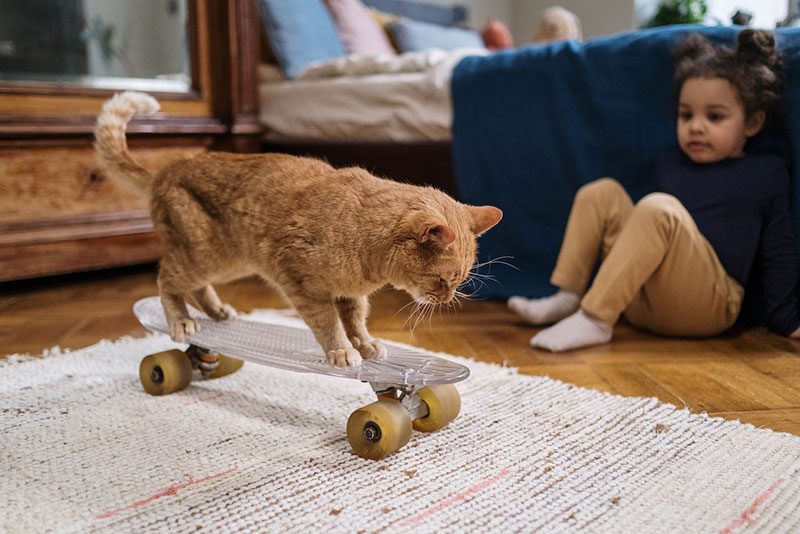Kittens and cats are the best pets out there. They're adorable, cuddly and fun-loving. These little fur balls exhibit some unique behavior you might be interested in learning more about. Most people are not aware that cats can be trained. After all, they are animals with no objective thought processes behind their actions, right? Wrong. Cats are intelligent and can be trained to do what you want without much effort.
1. Train a Cat with a Clicker and Treats
Positive reinforcement uses rewards to encourage the cat to do what you want. The most basic reward for training a cat is food. Treats are also a fun way to bring your cat closer to you. A clicker, on the other hand, is a tool used to mark the desired behavior. You will want to make the clicking sound when your cat displays your desired behavior. You will also want to use treats made of cheese, fish and chicken. These treats should be given in small amounts so as not to overfeed your cat. Once a cat understands that the clicking noise is equivalent to a treat, it will start associating the two and do what you want to get rewarded. A common desire among cat owners is to get their cats to use the litter box properly. To achieve this, a clean, extra-large litter box should be used along with a scoop, and of course, a reward. The litter box should be placed in a quiet and private area for your cat. When the kitty decides to use the box, click the clicker, give him a treat and praise him.
2. Keep the Training Sessions Short
A good rule of thumb is to keep the sessions short and fun. Your cat can quickly get bored when you extend the session, and they may start to dread the training process. Training should be something you enjoy doing with your cat, not something that stresses him out. When starting, 3–5 minute sessions should be enough to ensure your cat gets the gist of the training. As you advance through the training sessions, you can increase the frequency of training sessions. Short, multiple sessions are better than one long session every so often. As you advance with these sessions, you can also increase the length of the sessions. Make sure to end your sessions positively.
3. Don't Punish Bad Behavior
Punishment should never be used. Stop the training session immediately when your cat does something you don't like. Give him a chance to learn what you don't like and then continue the training process. Punishment should be reserved for only the most extreme cases when the cat does not understand what you want. Punishment will cause your cat to fear you, making it impossible for him to learn what you want. Alternatively, you can tackle instances of negative behavior by distracting a cat. For example, if you have a cat that jumps on top of things, you can walk away for a few minutes when the cat starts jumping.
4. Start Simple and Slowly Increase the Difficulty
The best way to make training a cat easier is to start. An example of this would be teaching your cat to come over when you call him. Your first step is to call your cat over to you. This should be the easiest step; calling him over, walking toward him and giving him the treat to show he is doing what you want. The second step involves walking away and waiting for the cat to come to you. The third step is to call the cat over and walk in a different direction. You can continue this exercise until you can walk around the house and have your cat follow. Once you have mastered this, you can add obstacles such as doors and chairs. Each time you introduce a new block, you should start a training session and reward your cat for accomplishing the goal. As you continue to add new obstacles and rewards, your cat will begin to master them.
5. Be Consistent
Once they have mastered the commands and obstacles, the next step is to get your cat to do it all the time. Once you have reached this far with your training, your cat will know what you want him to do, and he will start paying attention and following through. The only step left is to ensure your cat knows what he has to do every time. You will want to give your cat a treat if he comes running to you and another treat if he doesn't stop when you call him. As you repeat these steps over time, your cat will remember what he has to do every time.
Conclusion
Cats can be trained—cats are brilliant and can do simple routines almost as if they were humans. That being said, you must approach the training process correctly to ensure your cat does not suffer from any anxiety or fear. Also, feel free to play around with the training, given that cats love rewards and good fun.



